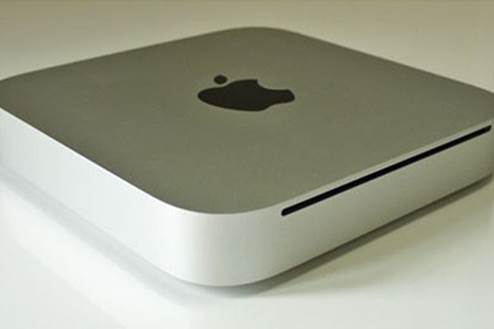October 23rd, 2012 was mainly
the day that the iPad mini was released; an event occurred with one great
headliner. But this new product was not in Apple's ecosystem alone. Amid the
bustle of the announcements, there was a small hardware relative ready to
participate in the launch festival: the 2012 Mac mini was refreshed. To address
the criticisms of last year's model, Apple added USB 3.0 ports, upgraded to
third-generation Ivy Bridge Core processors and increased the standard RAM to
4GB (you might configure it with up to 16GB). Perhaps, the most interesting
thing is that now it provides one hybrid a storage option, the so-called
FusionDrive, which combines flash memory with a SATA hard drive.

Apple’s
Mac mini (2012)
However, there is still one problem: what
customers is the Mac mini for? Is it a portable desktop best integrated in
yachts, airports, cars and hotel rooms? Or, with the starting price is at $599,
is it the perfect, low-cost migrant aide for customers who are switching from
Windows desktop?
Hardware

In
its essence, the mini's brushed aluminum shell has a wallflower attractiveness
that is at home in many settings.
Do not waste our time here - Apple always
has the extremely splendid design. Regardless of your brand allegiance, you
will hardly deny the simple, elegant design of the Mac mini. It is an object of
the technological equivalent of an irresistibly nice baby; the style of
hardware makes passers-by stop to give their compliments. And we're not just
saying that figuratively. In our office environment, we often entertained the
questions from nearby officemates who were attracted by the design. So, just
fill in the comment sections below with the inevitable accusations of fans, but
we know that you know that we are right. (It’s okay; you may keep silence if
you want).
In its essence, the mini's brushed aluminum
shell has a wallflower attractiveness that is at home in many settings; a
little modern will work in many environments. Much of this is due to the small
size of the machine, which has not changed since the mini was redesigned in
2010. With size of 7.7x7.7x1.4 inches, it retains the basic square shape of its
two predecessors. It gives up the hard edges for softly curved corners;
stimulated by the occasional black accents (for example, the logo on top, the
strip around the back has the ports and removable lid at the bottom). Those
users who are interested in buying the optional Apple remote for home
entertainment purposes will be glad to know that this unit still has the IR
receiver. You can flip the device on the side if you face space restriction and
need to put it in your office or A/V equipment, but it certainly will not be as
nice as the round lid shown.

Apple
Mac mini (2010)
Although all things change, they seem
similar, and it is quite true with the new Mac mini. Even a quick look at the
rear panel might cause customers misunderstanding that it is aimed at business
as usual, there is actually a very important change here - that is, the
addition of high-speed USB 3.0. On the other hand, the ports are located from
left to right exactly as they were on the 2011 model: source (still
integrated), Gigabit Ethernet, FireWire 800, full-sized HDMI, Thunderbolt, 4
USB 3.0, SDXC slot, audio-in and a 3.5mm headphone jack . Last year, we
criticized the company because they did not include a Thunderbolt dongle in the
box, but that criticism did not seem to be heard. Instead, we received a HDMI
to DVI adapter and it is just history repeating itself.

Apple
Mac mini (2011)

The
ports are located from left to right exactly as they were on the 2011 model:
source (still integrated), Gigabit Ethernet, FireWire 800, full-sized HDMI,
Thunderbolt, 4 USB 3.0, SDXC slot, audio-in and a 3.5mm headphone jack.
Similarly, Apple still does not change in
its decision to enable just one side of the Mac mini to swap, and that will be
the expandable memory of the unit. Despite the obvious disadvantages associated
with the hard drive (for example, the most likely potential hardware failure,
and so on); these users who try to pry the bottom of the device will only have
access to the two SODIMM slots. The rest is not accessible (unless you are the
kind of person who does it yourself). However, if you need monstrous volume of
RAM, the Mini now supports up to 16GB. In addition, this compartment also has
WiFi radio (AirPort Extreme 802.11n), Bluetooth 4.0 antennas and cooling fan.

Despite
the obvious disadvantages associated with the hard drive; these users who try
to pry the bottom of the device will only have access to the two SODIMM slots
To jump from last Sandy Bridge processors,
the 2012 Mac mini is now running on Intel's third-generation Ivy Bridge Core i5
and i7 CPUs. The $799 assessment unit packs a quad-core i7 that reaches 2.3GHz
along with an (optional) 1TB FusionDrive and Intel HD 4000 graphics and 4GB
RAM. Customers with more basic computing needs can choose the basic unit with a
dual core i5 CPU and a 500GB hard drive. It has the same clock speed, graphics
solution and amount of memory, but for a lower price of $599. It also has a
$999 server option aimed at well-informed users and enterprise, which is the
same as the high-end consumer model but has dual 1TB SATA drives.